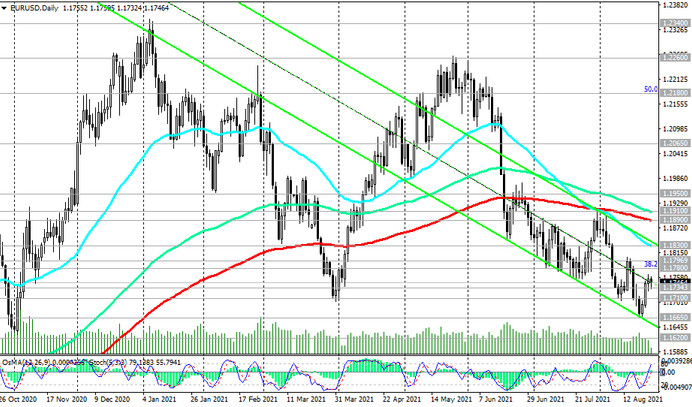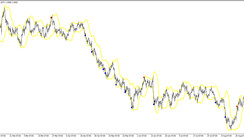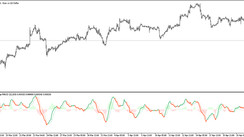The decline in the DXY dollar index has stopped at the moment. DXY futures are traded near 92.93 mark as of this writing, 83 points below a new 9-month high near 93.75 mark hit last week.
The DXY fell to 92.81 mark on Tuesday, under pressure ahead of the Fed's annual economic symposium, which will take place online from August 26-28 in Jackson Hole, Wyoming.
In our previous reviews, we have already mentioned this event, and how it can affect the prospects for the dollar and other financial market instruments.
At the symposium, representatives of world central banks and economists will discuss issues of the world economy and the prospects for monetary policy of central banks, and their statements can have a significant impact on the dynamics of the financial market.
The unconditional focus of attention still remains the speech at this symposium by the head of the Fed, Jerome Powell. His comments on the outlook for the Fed's monetary policy could have a significant impact on the USD and stock indices if he makes unexpected statements. It is most likely that Powell will again try to reassure investors by reassuring them of the commitment of the Fed leadership to continue pursuing the course of the current extra soft policy.
As follows from the July FRS minutes, published last week, despite significant growth rates, employment has not reached the required level to start raising the interest rate. In addition, last week Powell reiterated concerns about the continued spread of the coronavirus in the world and the United States, which carries the threat of lockdowns and a new economic slowdown. According to many market participants and economists, a sharp increase in the number of cases of Covid-19 infection in the United States may force the Fed to delay its decision to roll back asset purchases.
Additional downward pressure on the dollar at the beginning of this week was exerted by not very convincing macro statistics, which came from the US last Monday. US manufacturing and services growth slowed in August, according to research firm IHS Markit. The purchasing managers' index for the services sector, which accounts for the largest share of the country's economy, in August fell to an eight-month low of 55.2 from 59.9 in July, and the index for the manufacturing sector - to a four-month low of 61.2 from 63 ,4.
Now, to even more accurately determine the possible tone of Powell's speech at the symposium, market participants will carefully study the reports of the US Census Bureau and the US Department of Labor: on orders for durable goods that imply large investments, updated data on US GDP for the 2nd quarter and weekly data on the labor market with an analysis of statistics on the number of applications for unemployment.
Durable goods and capital goods orders data will be released today (12:30 GMT), while US GDP and labor market data will be released on Thursday, also at 12:30 (GMT).
The specified data is expected to come out with ambiguous values. The forecast for July implies a decrease of -0.3% for orders for durable goods (after an increase of +0.9% in June), an increase of +0.5% for orders for capital goods excluding defense and aviation (after an increase +0.7% in June). On the other hand, the revised GDP estimate for the 2nd quarter is expected to improve (+6.7% versus +6.5%, according to preliminary estimates). In the previous 1st quarter, GDP grew by +6.4%.
Economists also suggest that initial jobless claims rose last week, but not as much (to 350,000) relative to the new pandemic low of 348,000 hit the previous week. This is above the pre-crisis level, albeit below the highs reached at the beginning of the pandemic. In 2019, before the Covid-19 pandemic began, the average number of initial applications submitted weekly was 218,000.
If the data on the number of jobless claims turns out to be better than the forecast, then the dollar will receive support before the start of the symposium in Jackson Hole.
Meanwhile, the main rival of the dollar in the currency market euro received support at the beginning of today's European session after the publication (at 08:00 GMT) of the indicator of companies' assessment of the current situation IFO, which rose to 101.4 (against 100.4 in July and the forecast of growth to 100.6) , although other similar IFO indices, characterizing the state of the business climate and expectations in Germany, decreased (the business climate index in August fell to 99.4 from 100.7 in July against the forecast of 100.4).
As of this writing, EUR / USD is traded near 1.7447 mark, gaining support from the weakening dollar ahead of the Jackson Hole symposium, while still remaining in the bear market zone below the key resistance level 1.1890 (see Technical Analysis and Trading Recommendations).

One way or another, the US economy is recovering faster than the Eurozone economy, and if the worsening business sentiment in the Eurozone, and in particular in Germany, has a negative impact on GDP growth, the European economy will not be able to return to pre-crisis levels this year, economists say. At the same time, rising inflation in the United States, which shows the highest growth rates over the past 30 years, will sooner or later force the Fed leaders to pay attention to this and still begin to curtail the stimulating policy. Most economists believe that the Fed will start this process earlier than the ECB. And this is one of the main reasons to give preference still to the short positions on the EUR / USD pair, especially during periods of its correctional growth, for example, to the resistance levels 1.1780, 1.1800, 1.1830.





